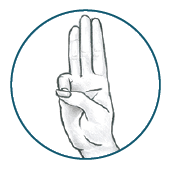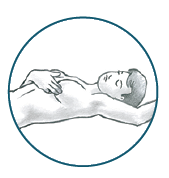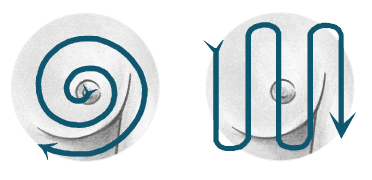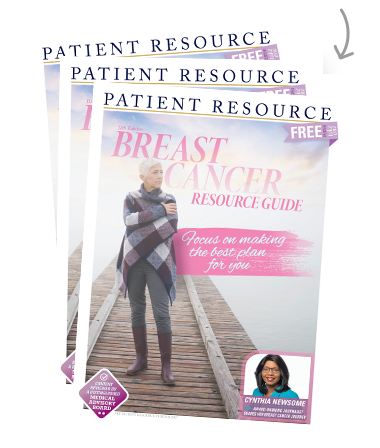Breast Cancer
Monitor your breast health
Breast Self-Exams
Performing a self breast exam regularly (at least monthly) will help you identify a lump or another potential problem sooner. Be aware that some breasts naturally have lumps. The goal is to become more familiar with how your breasts feel normally so you will know when something doesn’t feel right.
1. Using your right hand, extend your first three fingers, keeping them straight and together.

2. Either lie down or stand up, and raise your left arm over your head. Hint: this is easy to do in the shower.

3. Press firmly on your left breast, moving your fingers in a circular motion, starting at the nipple and moving outward. Or, move your fingers up and down, in rows, across your breast. Make sure to examine the entire breast and surrounding area, including your armpits, collarbone and top of your abdomen. Raise your right arm above your head and use your left hand to repeat the exam on your right breast.

Breast Self-Exams
These general mammogram guidelines are for women who have an average risk for breast cancer. You may need additional screenings if you have a family history of breast cancer, a genetic mutation (such as in a BRCA gene) known to increase the risk of breast cancer or other risk factors. Talk to your doctor about a schedule that is best for you.
| Age | Frequency |
| 35-40 | Baseline mammogram to compare against future mammograms |
| 40+ | Annually |



